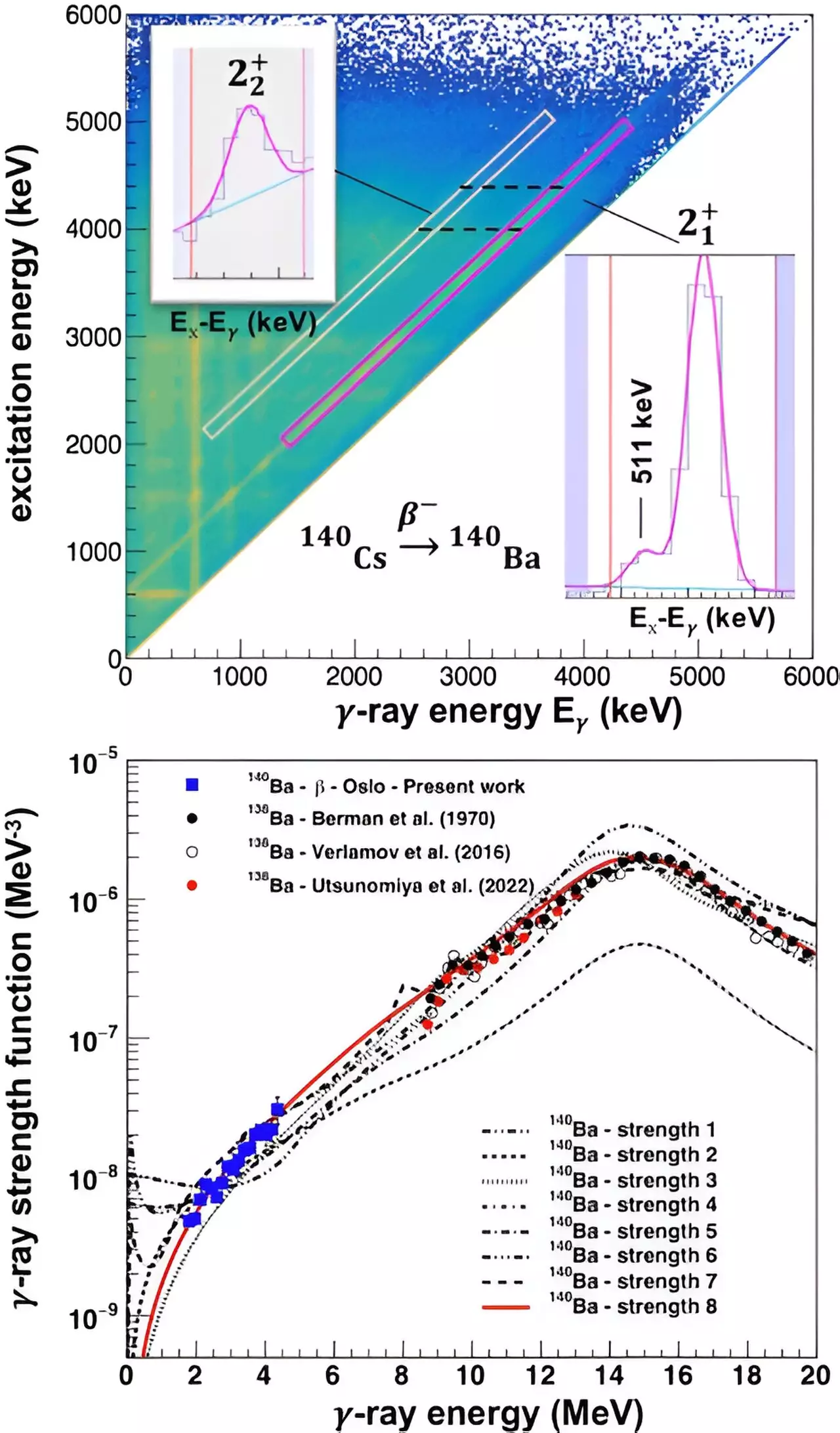Stars stand as the cosmic furnaces in which the elements of our universe are forged. Their life cycles—how they originate, evolve, and the mysteries surrounding their demise—have long captivated astronomers and physicists alike. Despite significant advances, the explicit mechanisms governing these stellar phenomena remain partially understood. A recent study conducted by a collaborative team from notable institutions, including the U.S. Department of Energy’s Argonne National Laboratory, sheds new light on the processes of nucleosynthesis—the formation of new atomic nuclei within stars.
At its core, the inquiry into how stars form and die revolves around the fundamental question of energy production. Stars generate immense energy through nuclear fusion, where lighter atomic nuclei fuse together to form heavier elements. This complex interplay of forces and reactions is still not fully delineated, presenting a challenge for scientists seeking to construct a comprehensive narrative of the universe’s chemical evolution. Key questions linger: What is the contribution of various stellar processes to elemental formation, and what are the pathways through which the heaviest and most complex elements arise?
A recent paper published in *Physical Review Letters* captures the essence of this inquiry. By leveraging advanced experimental techniques, the researchers provided critical insights into how barium and other heavy elements are synthesized in stars. More specifically, they uncovered the interaction of neutrons with barium-139 to produce barium-140, offering an innovative approach to measuring complex reactions that have long remained uncertain in astrophysical models.
Nucleosynthesis phenomena can generally be categorized into two distinct processes: rapid nucleosynthesis (r-process) and slow nucleosynthesis (s-process). The r-process, occurring in cataclysmic events such as supernovae, takes mere seconds and leads to the formation of heavy elements under extreme conditions. In contrast, the s-process transpires over a more extended timeline within older, stable stars, enabling them to create elements gradually.
Interestingly, contemporary astronomical observations highlight disparities in elemental abundances that challenge the established r- and s-process categories. This gap led scientists to propose a third pathway, termed the intermediate or i-process. The i-process is posited where stars exhibit peculiar elemental signatures indicative of a synthesis pathway distinct from what was previously recognized.
Lead researchers Artemis Spyrou and Dennis Mücher describe the revelations that arose from their investigations. “It is now clear that the synthesis of elements in stars is more complex than previously thought,” Spyrou stated, emphasizing that the nuances of stellar nucleosynthesis demand detailed experimental analysis in order to unravel the contributions from various astrophysical processes.
Utilizing the CARIBU (Carl R. G. R. Brouwer) facility at the Argonne Tandem Linac Accelerator System, the research team focused on examining the decay of radioactive isotopes. By assessing the neutron capture rates associated with barium isotopes, they indirectly calculated how barium-139 transforms into barium-140. This endeavor was particularly intricate due to the fleeting nature of barium-139, whose half-life is a mere 83 minutes. By developing clever experimental techniques that employed a beam of cesium-140—a stable isotope that decays into barium-140—they successfully detected gamma rays emitted during this reaction.
The implications of their findings extend to broader applications. With a deeper understanding of neutron capture processes, including their correlations with neutron-rich isotopes and the genesis of elements in stars, researchers can further refine their models of nucleosynthesis. Future experimental campaigns at the enhanced nuCARIBU facility are anticipated to delve deeper into the i-process, potentially paving the way for groundbreaking discoveries in astrophysics.
The ongoing research into stellar nucleosynthesis underscores an essential truth: our knowledge of the cosmos is still evolving. As scientists gather more data, the complexities of how elements are forged will gradually unravel, offering clearer insights into our origins and the elemental fabric of the universe.
This study not only enhances our understanding of the intricate processes within stars but also invites further questions regarding the interactions of heavy elements with the environment surrounding us. As researchers continue to probe the celestial intricacies of the universe, we inch closer to understanding the foundational aspects of our own existence. The journey of discovery is far from complete, but with each step, we illuminate the dark corners of cosmic history that shape everything we know.


Leave a Reply